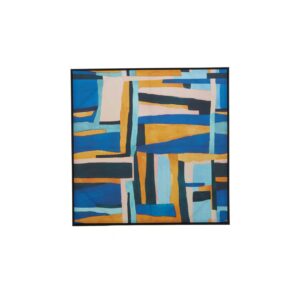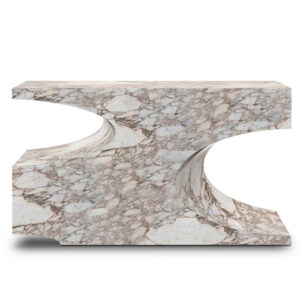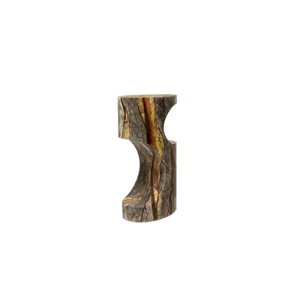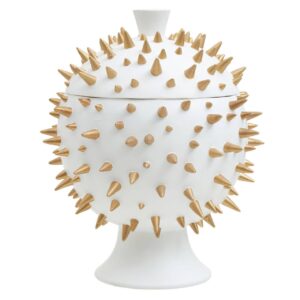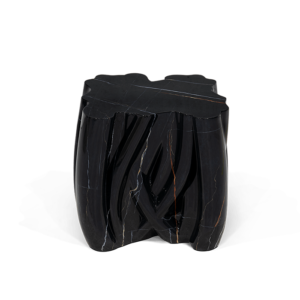Trends
POST MODERN INTERIOR DESIGN: A GUIDE FOR BEGINNERS
Unveil Luxury, Unleash Comfort – Eclectic Niche.
If you are looking for a way to spice up your living space, you might want to consider post modern interior design. Post modernism is a style that emerged in the late 20th century as a reaction to the rigid rules and conventions of modernism. Post modern design embraces diversity, complexity, ambiguity, and playfulness. It mixes different styles, materials, colors, and patterns to create eclectic and expressive spaces.
In this article, we will explore the characteristics, history, and examples of post modern interior design. We will also give you some tips on how to achieve this look in your own home. Whether you want to add some flair to your bedroom, living room, kitchen, or bathroom, post modern design can help you create a unique and personal environment.
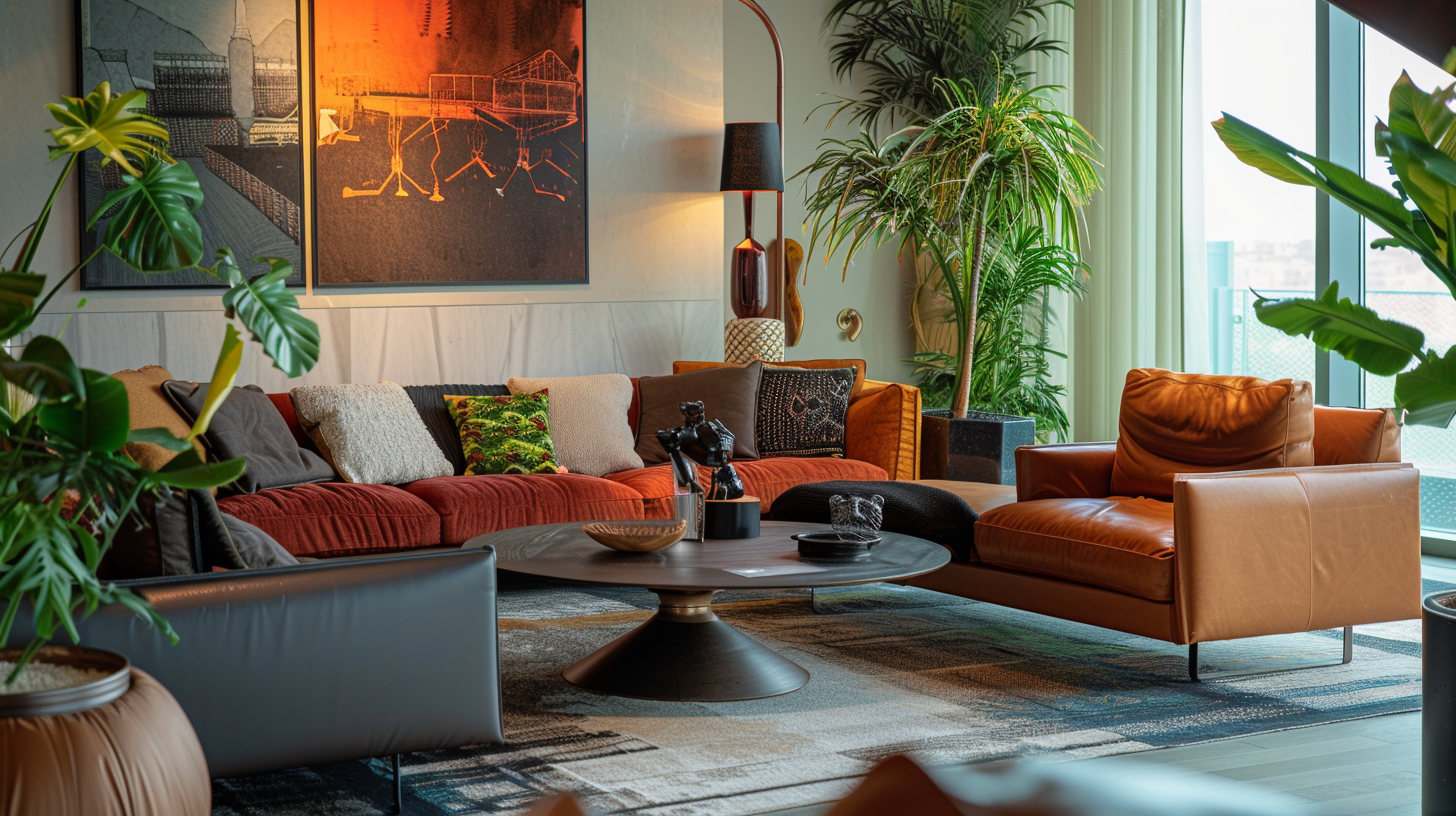
What is Post Modern Interior Design?
Post modern interior design is a style that borrows elements from various historical and cultural sources, such as art deco, pop art, kitsch, surrealism, and neo-classicism. It also incorporates influences from different regions and cultures, such as Africa, Asia, Latin America, and the Middle East. Post modern design is not afraid to mix and match different styles, even if they seem contradictory or incompatible. It rejects the idea that form follows function, and instead celebrates form over function, ornament over simplicity, and symbolism over rationality.
Who is The Father of Postmodernism
While design movements often resist single parentage, the moniker of the “father of postmodernism” is often attributed to the collaborative efforts of architects Robert Venturi and Denise Scott Brown. The duo, known not only for their shared professional endeavors but also as life partners, left an indelible mark on the architectural landscape, challenging the entrenched norms of modernism with a fresh, iconoclastic perspective.
At the heart of their influential contributions stands the Vanna Venturi House, a residential masterpiece completed in 1964. This house serves as a tangible manifestation of postmodern principles, marking a departure from the stark minimalism championed by modernist ideologies. In contrast to the rigid geometries and austere aesthetic of the modernist movement, Venturi and Scott Brown introduced complexity, contradiction, and a playful embrace of historical allusions.
Humor, a quality often absent in the solemnity of modernism, became a defining feature of their work. The Vanna Venturi House, with its exaggerated forms and deliberately eclectic elements, injected a sense of wit into architectural discourse. This departure from the severity of modernist design was a deliberate choice to infuse joy and nuance into the built environment.
Moreover, Venturi and Scott Brown championed the idea of “messy vitality” over the ordered purity advocated by modernism. They celebrated the eclectic nature of cities, acknowledging the rich tapestry of architectural styles that coexisted in urban spaces. This acknowledgment of diversity and the rejection of a singular, prescriptive style aligned with the core tenets of postmodernism.
The Vanna Venturi House, with its pitched roof, arches, and an almost whimsical reinterpretation of classical elements, became a symbol of rebellion against the rigid constraints of modernist dogma. It embodied the postmodern embrace of architectural pluralism, encouraging a more inclusive and diverse approach to design.
Venturi and Scott Brown’s influence extended beyond individual projects; their seminal book, “Learning from Las Vegas,” written with Steven Izenour, became a manifesto for the postmodern movement. In this work, the authors celebrated the commercial vernacular of Las Vegas, elevating the ordinary and challenging the high/low cultural divide perpetuated by modernism. Their exploration of the “decorated shed” and the “duck,” terms coined in the book, became foundational concepts in postmodern architectural discourse.
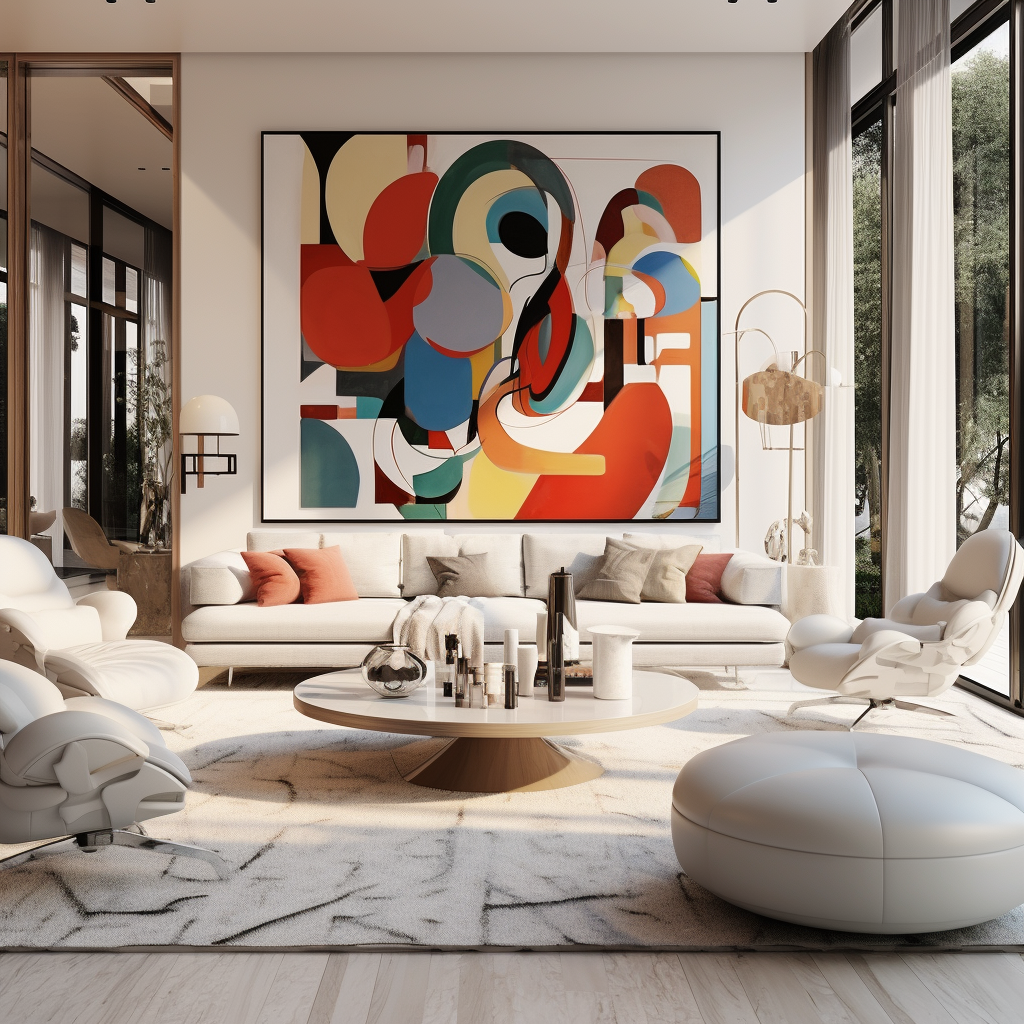
Defining Elements of Postmodernism
- Eclectic Style: Postmodern designers draw inspiration from a wide range of sources, seamlessly blending historical styles, pop culture, and avant-garde elements. mixing and matching elements from different styles, periods, cultures, and genres. Think Memphis Group’s neon and geometric shapes juxtaposed with Rococo flourishes.
- Playful Elements: Whimsy reigns supreme in postmodern spaces. Expect unexpected juxtapositions, bold graphics, and unconventional furniture that break away from traditional forms. It uses humor, irony, parody, and whimsy to create unexpected and surprising effects. Think oversized lamps resembling planets or chairs carved into animal shapes.
- Cultural References: Postmodernism relishes in historical and cultural allusions, weaving narratives into the design. it borrows and quotes from various sources of inspiration, such as art history, pop culture, literature, and architecture. Architectural elements echo classical motifs, while furniture could reference Pop Art icons.
Main Concepts of Postmodernism
- Pluralism: Embracing multiple viewpoints and styles, rejecting a singular design ideology.
- Irony and Subversion: Challenging established conventions and finding beauty in the unexpected.
- Contextualism: Considering the environment and cultural context of a space in the design process.
History of Post Modern Interior Design
Post modern interior design emerged in the late 1970s and early 1980s as a response to the dominance of modernism in architecture and design. Modernism was a movement that aimed to create simple, functional, and rational spaces that followed universal principles of beauty and harmony. Modernism rejected ornamentation, historical references, and regional influences as unnecessary and distracting.
However, some designers felt that modernism was too cold, impersonal, and boring. They wanted to create spaces that reflected their individuality,
creativity, and culture. They also wanted to challenge the authority and seriousness of modernism by using humor, irony, and playfulness.
Some of the pioneers of post modern interior design were Robert Venturi (1925-2018), Charles Jencks (1939-2019), Alessandro Mendini (1931-2019), Ettore Sottsass (1917-2007), among others.
What Makes an Interior Design Postmodern?
Postmodern design is characterized by a departure from the strictures of modernist principles, and its identification goes beyond mere aesthetics. It is a movement that fundamentally challenges the prevailing “less is more” mantra, embracing complexity, ornamentation, and a celebration of the eclectic.
- Rejection of Minimalism: Postmodernism stands in stark contrast to the minimalist ethos championed by modernism. Instead of adhering to the idea that simplicity equates to sophistication, postmodern design welcomes a more elaborate and layered approach. Complexity and ornamentation become avenues for self-expression, allowing designers to explore a rich tapestry of visual elements.
- Celebration of the Hybrid: A key tenet of postmodern design is the celebration of hybridity. This involves a fearless blending of styles, materials, and eras, resulting in unique and unexpected combinations. Postmodern spaces often feature an amalgamation of influences, challenging the notion that design must adhere to a singular, cohesive aesthetic.
- Irony and Humor: Postmodern design exhibits a notable sense of irony and humor. Unlike the serious and austere tone often associated with modernism, postmodern spaces are characterized by a playful approach. Designers introduce whimsical elements, unconventional choices, and unexpected juxtapositions, injecting spaces with wit and lightheartedness.
- Subverting Expectations: Traditional forms and functions are subverted in postmodern design, offering a playful commentary on established design norms. The movement encourages designers to question preconceived notions and challenge expectations. This subversion can manifest in the reimagining of familiar architectural elements or the incorporation of unexpected materials.
-

Brabbu
BRYCE II SIDE TABLE
£4,566 Add to cart -

Brabbu
HERA SWIVEL ARMCHAIR
£3,715 – £5,095 Select options This product has multiple variants. The options may be chosen on the product page -

North West
Picos Large Box
£130 Add to cart
Examples of Post Modern Interior Design
To give you some inspiration for your own post modern interior design project,
here are some examples of spaces that showcase this style:
- The Vanna Venturi House in Philadelphia by Robert Venturi is considered one of the first examples of post modern architecture. The house features a complex geometry that contrasts with the simple shape of the traditional house. It also has elements that reference historical styles such as the arches and columns.
- The Groninger Museum in Groningen by Alessandro Mendini is an example of post modern museum design. The museum consists of three pavilions that have different shapes, colors, and materials. The pavilions reflect the diversity of the museum’s collections and the cultural identity of the city.
- The Hotel Puerta America in Madrid by various designers is an example of post modern hotel design. The hotel has 12 floors, each designed by a different architect or designer. The floors have different themes, such as space, color, nature, and technology. The hotel offers a variety of experiences and sensations to the guests.
- The Vitra Design Museum in Weil am Rhein by Frank Gehry is an example of post modern museum design. The museum has a deconstructivist style that breaks the conventional rules of geometry and symmetry. The museum has a dynamic and sculptural form that contrasts with the surrounding landscape.
- The Portland Building in Portland by Michael Graves is an example of post modern office building design. The building has a colorful facade that features geometric shapes and decorative motifs. The building also has a large statue of Portlandia, a female figure that symbolizes the city.

Postmodern vs. Modern
Modern:
- Streamlined and Minimalist: Modern design emphasizes simplicity, favoring clean lines, and a streamlined aesthetic. The mantra is “less is more,” with a focus on minimal ornamentation.
- Function Over Form: Modernist principles prioritize functionality, often leading to designs that are pragmatic and efficient.
- Clean Lines and Uniformity: Straight lines, geometric shapes, and uniformity are key features of modern design, contributing to a sense of order and simplicity.
Postmodern:
- Eclectic and Playful: Postmodernism revels in eclecticism, embracing a diverse range of styles, materials, and influences. Playfulness is a central characteristic, allowing for more freedom in design expression.
- Celebrates Complexity and Contradiction: Unlike modernism, postmodern design rejects the idea that a design should adhere to a singular aesthetic or philosophy. It embraces complexity and even finds beauty in contradictions.
- Embraces Irony and Cultural References: Postmodern design incorporates elements of irony and often references cultural symbols, challenging traditional norms and engaging with the viewer on a more conceptual level.
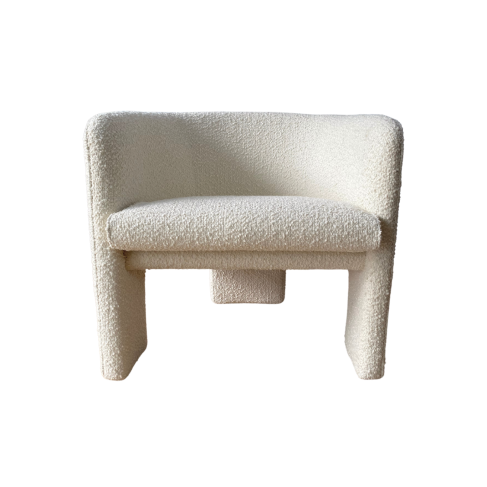
Postmodern vs. Contemporary
Postmodern:
- A Specific Design Movement: Postmodernism is a distinct design movement that emerged as a reaction against the principles of modernism. It has identifiable characteristics, as outlined by its rejection of minimalist ideals and its celebration of diversity.
- Defined Characteristics: Postmodern design is characterized by its rejection of a singular aesthetic, celebration of eclecticism, and incorporation of irony and cultural references.
Contemporary:
- Broader and Current Trends: Contemporary design is a more inclusive term that encompasses the design trends of the current moment. It doesn’t necessarily adhere to specific movements or principles.
- Reflective of the Times: Contemporary design is reflective of the current design ethos, which may include influences from various periods and styles. It is more adaptable and can incorporate elements from postmodernism or other design movements.
Tips for Post Modern Interior Design
If you want to create your own post modern interior design, here are some tips to help you:
- Be bold and creative: Post modern design is all about expressing your personality and breaking the rules. Don’t be afraid to experiment with different styles, colors, patterns, and materials. Mix and match elements that you like and create your own style.
- Be playful and ironic: Post modern design is also about having fun and challenging the norms. Use humor, satire, parody, and exaggeration to create spaces that surprise and entertain. Use elements that have symbolic or cultural meanings and play with them.
- Be eclectic and diverse: Post modern design is also about celebrating diversity and complexity. Use elements from different historical and cultural sources and combine them in unexpected ways. Use elements from different regions and cultures and create spaces that reflect your identity and background.
-

Brabbu
MANSFIELD ARMCHAIR
£3,335 Add to cart -

Boca do Lobo
Monochrome Black Faux-Marble
£6,830 Select options This product has multiple variants. The options may be chosen on the product page -

Luxxu
Scala Chandelier
£41,225 Add to cart
How to Incorporate Post Modernism in Your Home
If you want to incorporate post modernism in your home, you don’t need to renovate your entire house or buy expensive furniture. You can simply add some post modern elements to your existing space and create a unique and personal environment. Here are some ideas on how to do that:
- Add some color: One of the easiest ways to add some post modern flair to your home is to use color. Post modern design uses color as a powerful tool to create contrast and mood. You can use bright, bold, and vibrant colors to create a lively and energetic space. You can also use pastels, metallics, and neons to create a whimsical and futuristic space. You can paint your walls, furniture, or accessories with different colors, or use colorful fabrics, rugs, pillows, or curtains.
- Add some pattern: Another way to add some post modern flair to your home is to use pattern. Post modern design uses pattern as a way to add diversity and complexity to the space. You can use geometric, floral, animal, or abstract patterns to create a dynamic and eclectic space. You can also mix and match different patterns, even if they seem contradictory or incompatible. You can use wallpaper, tiles, carpets, or art prints with different patterns, or use patterned fabrics, cushions, or blankets.
- Add some texture: Another way to add some post modern flair to your home is to use texture. Post modern design uses texture as a way to add interest and personality to the space. You can use smooth, rough, soft, hard, shiny, or matte textures to create a varied and expressive space. You can also mix and match different textures, even if they seem contradictory or incompatible. You can use wood, metal, glass, plastic, or ceramic materials with different textures, or use textured fabrics, knits, or furs.
- Add some ornamentation: Another way to add some post modern flair to your home is to use ornamentation. Post modern design rejects the idea that form follows function. Instead, it celebrates decoration and embellishment as a way to add interest and personality to the space. You can use fringes, tassels, beads, sequins, or stickers as decorative elements. You can also use sculptures,
statues, vases, or figurines as decorative elements. You can also use lamps,
mirrors, clocks, or signs as decorative elements. - Add some symbolism: Another way to add some post-modern flair to your home is to use symbolism. Postmodern design uses symbols and references to convey meaning and express identity. You can use flags,
maps, logos, or slogans as symbols of your nationality, culture, or beliefs. You can also use images, quotes, or names of your favorite artists, writers, or celebrities as symbols of your inspiration, admiration, or aspiration.
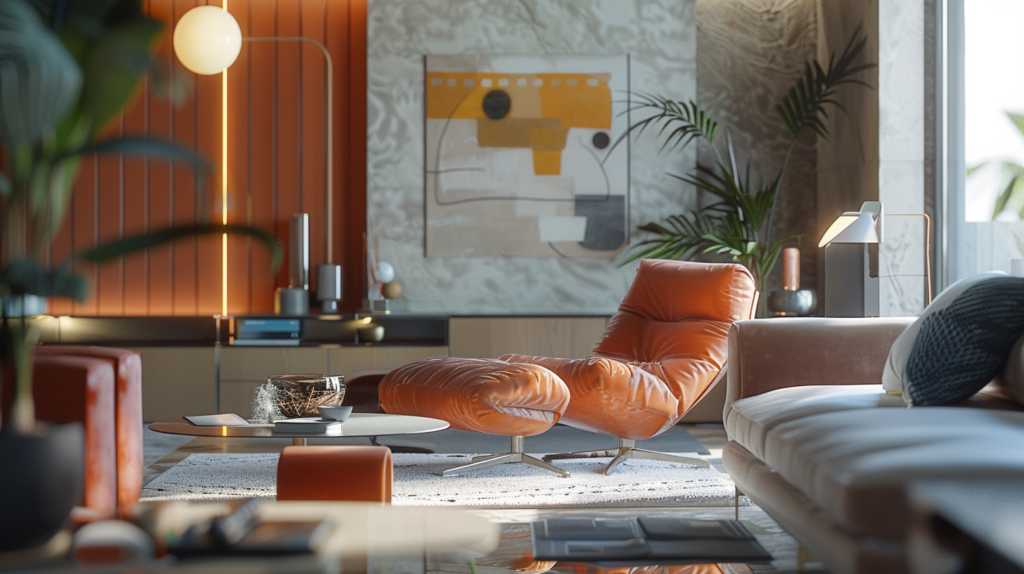
Criticisms of Postmodernism
Kitsch and Superficiality:
- Playful Mix of Styles: One significant criticism leveled against postmodernism is its penchant for a playful mix of styles, which some argue results in an appearance of kitsch. Critics suggest that the combination of diverse elements may lack depth and coherence, resembling a haphazard collection of unrelated design features.
- Superficial Aesthetics: The emphasis on visual eclecticism sometimes leads to concerns that postmodern spaces prioritize surface-level aesthetics over substantive design principles. This critique argues that the movement’s focus on creating visually striking environments may overlook deeper meanings or functionality.
Lack of Originality:
- Heavy Reliance on Referencing Past Styles: Critics have contended that postmodernism relies heavily on referencing and borrowing from past styles, resulting in what some describe as a “pastiche” rather than a genuinely innovative or original movement. This critique challenges the notion that postmodern designs bring forth something entirely new to the architectural and design landscape.
Inaccessibility:
- Unconventional Nature: While postmodernism celebrates unconventional and diverse design, this very characteristic can be a source of criticism. The movement’s departure from traditional norms may make some designs appear overly whimsical or even impractical, alienating individuals who value more conventional or functional aesthetics.
- Practicality Concerns: Critics argue that certain postmodern spaces may sacrifice practicality in favor of conceptual creativity. This inaccessibility, both in terms of design language and functionality, can create a divide, leaving some observers feeling disconnected or excluded from the spaces created by postmodern design.
Postmodern interior design remains a significant chapter in the history of design, challenging the status quo and pushing boundaries. Its impact resonates even today, reminding us that design can be more than just practical; it can be playful, ironic, and a reflection of our complex cultural landscape. While criticisms exist, postmodernism’s vibrant spirit and dedication to breaking convention continue to inspire creativity and individuality in the world of design

